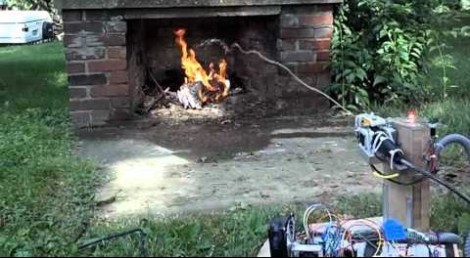[youtube=http://www.youtube.com/watch?v=pIb1scnD67o&w=470]
[Rob] lives in a 100-year-old house, and with these antique lath and plaster walls and old window frames comes a terrible amount of drafts. The usual way to combat this energy inefficiency is with a thermal imaging camera, a device that overlays the temperature of an object with a video image. These cameras are hideously expensive so [Rob] did what any of us would do and built his own.
The build centers around a Melexis MLX90620 far infrared thermopile that can be had for about $80. Basically, this sensor is a very, very low resolution camera (16×4 pixels) that senses heat instead of light. By sticking this sensor on a breadboard with an Arduino Mini and WiFly network adapter, [Rob] is able to pull the data down from the IR sensor to his iPhone and overlay it on the feed from the camera.
The result, as seen in the video above, is a low-resolution but still very useful thermal imaging camera, perfect for looking for cold drafts in an old house or tracking down [Arnie] just like a Predator.
Tip ‘o the hat to [Ronald] for sending this one in.












